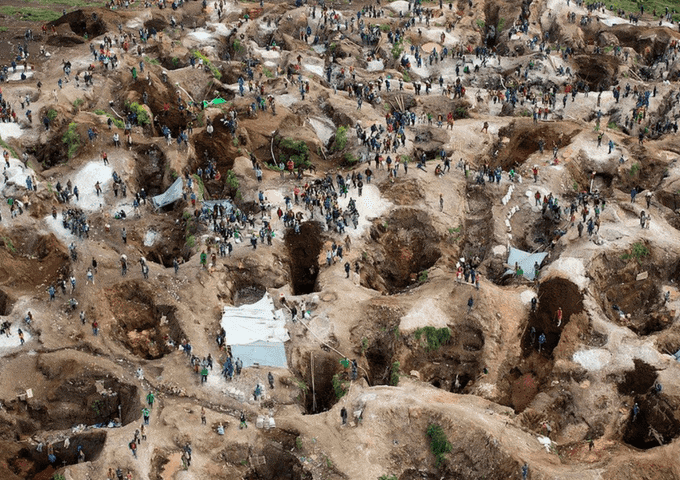Introduction
Artisanal mining refers to the small-scale, informal extraction of minerals, often carried out by individual miners or small groups. This practice is prevalent in various regions across the globe, especially in developing countries, where artisanal miners play a critical role in local economies. Despite its significance, artisanal mining is often overshadowed by larger, industrial mining operations, which leads to a lack of understanding of its complexities. This blog post aims to provide a thorough exploration of artisanal mining, shedding light on its operations, challenges, environmental impacts, and potential for sustainable development.

The Characteristics of Artisanal Mining
Scale and Methodology
Artisanal mining operations are typically characterized by their small size and rudimentary extraction methods. Unlike commercial mining, which uses heavy machinery and advanced technology, artisanal miners rely on manual techniques, hand tools, and basic equipment. These miners generally work in alluvial deposits, which are sediments transported by water, or in hard rock areas where minerals are located.
The methods of extraction vary widely depending on the minerals sought. For example, gold panning is a common technique in riverbeds, while tunneling may be employed in hard rock mining. The operations are often flexible and adaptable based on the available resources and environmental conditions, making it accessible for communities with limited financial means.
Economic Importance
Artisanal mining is crucial to the livelihoods of millions around the world. It is estimated that between 20 to 30 million people are engaged in artisanal mining, with tens of millions more relying on it indirectly. This sector provides income not only to miners but also to those involved in supporting roles, such as transportation and marketing.
In many rural communities, artisanal mining serves as a primary income source, particularly in areas where formal job opportunities are scarce. The revenues generated from this sector can improve living standards, facilitate education, and fund healthcare for miners and their families.
Social and Cultural Dimensions
Artisanal mining is deeply ingrained in the cultural fabric of many communities, especially in Africa and Latin America. It often operates alongside traditional practices and local customs, influencing social structures and community dynamics. In some regions, artisanal mining has been a part of the culture for generations, passed down through families as a form of heritage.
However, the informal nature of artisanal mining can also foster social inequalities and conflicts, particularly over mineral-rich lands. Understanding the social context in which these operations occur is crucial for developing inclusive policies that recognize the needs and rights of local communities.
Challenges Facing Artisanal Mining
Regulation and Formalization
One of the most pressing challenges in artisanal mining is its prevalence in the informal economy. Many artisanal miners operate without licenses or permits, exposing them to legal risks and preventing them from benefiting from government support programs. Efforts to regulate and formalize the sector are often met with resistance, as miners fear losing access to the resources they currently exploit.
Safety and Health Risks
Artisanal miners face numerous health and safety risks due to the reliance on manual labor and the lack of safety protocols. Mining can be physically demanding and hazardous. Working in unstable ground conditions, exposure to toxic substances (such as mercury in gold extraction), and the absence of protective gear significantly increase the likelihood of accidents and occupational illnesses.
Environmental Impacts
The environmental consequences of artisanal mining can be severe. Poorly regulated mining operations often lead to deforestation, soil erosion, and water pollution. The use of toxic chemicals, particularly mercury in gold processing, poses threats not only to ecosystems but also to the health of local communities.
These practices threaten biodiversity and can compromise water quality for surrounding areas, exacerbating existing environmental challenges. The need for sustainable practices in artisanal mining has never been more critical.
Pathways to Sustainable Development
Despite its challenges, artisanal mining has the potential to contribute positively to local and national economies if approached with sustainable practices in mind. Here, we explore several key strategies for fostering sustainability within the sector.
Promoting Formalization
Efforts to recognize and formalize artisanal mining can improve mineral output, enhance miners’ rights, and facilitate access to resources. Providing legal frameworks that allow miners to obtain licenses and permits can lead to better management of mining activities and enable local economies to benefit from the revenue generated by mineral extraction.
Training and Education
Investing in training and education programs for artisanal miners can significantly improve mining practices. Providing miners with knowledge about safety protocols, environmental stewardship, and efficient extraction methods can help mitigate the risks associated with artisanal operations. Programs that emphasize the use of sustainable technologies can also reduce the environmental harm caused by traditional mining practices.
Community Engagement and Collaboration
Successful approaches to sustainable artisanal mining often involve the active engagement of local communities. Collaborative initiatives that include miners, local governments, NGOs, and mining companies can foster dialogue and promote shared goals in mineral management. Community-led initiatives can empower miners to take ownership of their operations and promote responsible mining practices while aligning with conservation efforts.
Responsible Supply Chains
Another avenue for promoting sustainability in artisanal mining lies within the supply chain. Increased consumer awareness of ethical and sustainable sourcing can motivate shifts in how companies engage with artisanal miners. By supporting initiatives that encourage responsible sourcing from artisanal operations, companies can contribute positively to the miners’ livelihoods and the environments in which they operate.
Conclusion
Artisanal mining plays a critical role in the economies and cultures of many communities worldwide. However, the sector must navigate a landscape fraught with challenges, including informal operations, health risks, and environmental degradation. By embracing strategies promoting formalization, education, community collaboration, and ethical supply chains, we can unlock the potential of artisanal mining as a force for sustainable development.
Ultimately, recognizing the value of artisanal mining and investing in responsible practices can lead to improved livelihoods for millions and positive impacts on the environment. Stakeholders across the spectrum must work together to transform artisanal mining into an industry that respects the needs of the planet and its people.

